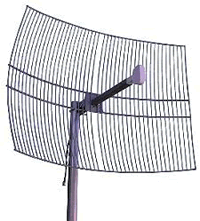directional antenna design
900 mhz to 2.4 ghz reception but more is better. I know thats asking a lot.
very directional
cheap.
any suggestions?
I thought about trying some sort of helical antenna but with log spaced windings in endfire mode and a soup can enclosure to block reception from the sides. would having a varying winding spacing give it some bandwidth or just hose it up? To be clear what I mean is the coil would have a constant diameter but more windings on one end than the other.
Apparently your knowledge of antennas is low. Find a textbook on antennas to get more information. I can recommend the ARRL Antenna Book.
How about a log-periodic antenna? This is directional and will easily cover the bandwidth.
http://en.wikipedia.org/wiki/Log-periodic_antenna
http://glendash.com/Dash_of_EMC/Log_...g_Periodic.htm
Thanks volker.
Yes J. My knowledge of antenna design is low. Thats why I get on the forum and ask questions. Why do you get on here?
You might consider modifying the LNA in a 24dBi Parabolic Grid antenna and if bi-directional, replace the LNA with a dipole and focus the beam to the dipole, offset from the centre axis.

OK that covers his 2.4 GHz but what about the 900 MHz to 2.4 GHz ? ;)
as has been suggested a log periodic will be ideal
Dave
One of my favourite wideband antennas is the "conical log spiral" - a neat 3D blend of a log periodic and a spiral antenna. They are easy to fabricate by etching an appropriately shaped [sector of a circle] piece of copper-clad flexible substrate (eg polyimide sheet or thin FR4), and then rolling it into a cone and soldering the seam. I've made successful antennas over your frequency range by sticking adhesive copper tape to cardboard conical forms cut with scissors :)
It's been a couple of years, but from memory the gain was related to the angle at the cone's apex. I recall the gains were modest (~5 dB), but I was actually aiming at a hemispherical radiation pattern (of gain ~3dB) with my prototypes so I never explored options for greater directivity.
Google around (they're popular in the radio astronomy circles). Let me know if you're interested and I'll dig through my archives for specific design examples.
No offense, but to ask a question, you should know at least something. To design a directional antenna, one needs to specify its directionality or gain, possibly indicate a project needs.
Antennas are no "bunches of twisted coils of wires".
Jiri, why so aggressive? His initial idea of log spaced windings wasn't that bad, because that's how wideband planar spiral antennas look like. Trying to combine that with a helix design is unusual at first, but it has some logic. Now thylacine1975 described a practical version that indeed works.
Be patient with questions that are outside the box. They can trigger interesting discussions.
directional antenna design 相关文章:
